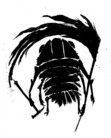Patrick Stuart's Blog, page 16
February 5, 2022
would a depressed man be watching this much Anime?
People say I'm depressed, but would a depressed man be watching this much Anime? I think not. After mainlining even more of this stuff
Themes
Still Upset About WWII
'Dororo', which was basically a psychogeography of living with/under a Fascist power structure
FullMetal Alchemist - oops we did a genocide
Attack On Titan, especially last season - heroes are arguably the baddies, oops we did a genocide, generational shame
Slime had an affecting and strange one with a child transported from Japan during the WWII bombings meeting someone from modern Japan who tells her the country is doing well and they re-built which makes her happy, (he does not go into specifics about the US bases and half of SEA still hating their guts)
Now Prussia Is My Best Friend
There is one nation in occidentalist nihon imagination and unlike the anglo-influenced occidentalist blur that I may have been expecting; friendship broken with anglos, now Deutschland ist mine best friend

Nihon simps hard for Prussia, so smart, so disciplined, so PURE. is the feeling reciprocated? hard to tell.
Tragic Bad-Guy Point-Of-Death Backstory FlashbaacksA technique which according to my amygdala, can simply never be overused. I just never seem to get tired of these. That orc you just killed - they had an abusive orc family they rebelled against but ended up as a mercenary with a drinking problem, they were looking for a way out before you CUT THEIR FUCKING HEAD OFF.
THERE'S A VIRTUAL WOOOOORLDI'm thinking more of 'summer wars' and 'Belle', in which the Virtual world is .. basically the same thing?
In the better fictions this is like the dreamy forest bits in Midsummer Nights Dream, or the Maze bits in whatever play, or Masqued Ball stuff - all the characters we know can meet and interact in different identities across a different reality.
Anime Mans BurdenHow many Isekai shows are there with some nerd colonising a fantasy world, based on computer game logic, and 'improving' everything with the power of their enlighting civilisation. It’s interesting, in its entirely unconscious belief in the power of reason and a decent person from a particular cutlure 'uplifting' a band of simple foreigners. It’s a hell of a lot like Victorian fiction. THANK YOU FOR IMPROVING US SEMPAI!
Boner For Tha PehhpeAye, they do have the best costumes and architecture and won't directly kill you for criticising their beliefs - it feels like there is a LOT of fantasy/sci-fi dark Catholicism in Anime or is that just me?
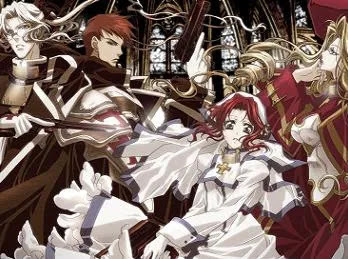
Seriously the Vatican needs to contact the Japanese government and start charging copyright on this stuff, there are more cathedrals, conspiracies and weird priests in Anime than in Italy.
Breath FetishismNot as a sex thing, but Demon Slayer, and MHA (which are almost the same show some of the time), and I think a few others, this deal where you do ritually controlled breathing and learn to super-breathe, and then learn to super-breathe ALL OF THE TIME to become super-charged, AND it’s in the first bit of Jojo as well
is this a Japanese body-awareness thing? big history of breath control? lots of concentration on breathing, I mean more than equivalent martial traditions?
The Word for "Hero" in Anime is "Hero"Not a surprise to see a lot of boys fiction with a focus on heroism, BUT - lot of these make a point of the word 'Hero' being the western word, so, is there not an exact equivalent in Japanese? Is that precise Western construction a slightly novel thing in Japanese culture?
Pure Boys and Decency PornRanking of Kings - seriously disabled but VERY PURE boy takes on all and warms and changes their hearts with the power of his kindness and purity
MHA - VERY Pure and only slightly Berserk boy warms hearts and cares for others
Slime - Extremely decent, no EXTREMELY Decent and in fact virginal, and now a-gender reincarnated pure boy Kiplings the fuck out of a society of Fantasy monsters and impresses all with his capability, decency and purity
Demon Slayer - Literally the purest of very pure boys, so pure that if you INVADE HIS MIND his subconscious is literally a blue peaceful ocean, SO FUCKING PURE, absolutely murders the fuck out of a bunch of evil demons who, in their sad-boy flashbacks, turn out to not be so bad after all
Mob Psycho - bowl-cut Pure Boy just wants to do the right thing and be a normal teenager while happening to be the most insanely powerful psyker ever
MHA & JoJo have this too, even Odd Taxi a bit
It’s not that they do this, it’s the intensity and prevalence of the theme, or is that just my viewing habits and the algorithm shaping my experience? Am I secretly a pure boy fetishist?
Speaking of which;
Exciting levels of PederastyFrom mild but continual hebephilia to "I look twelve and dress like a stripper but I'm 1,000 years old oops I've FALLEN ON YOUR FACE". Nihon rarely fails to live up, or down, to expectation.
Tha Shows
Ranking of Kings
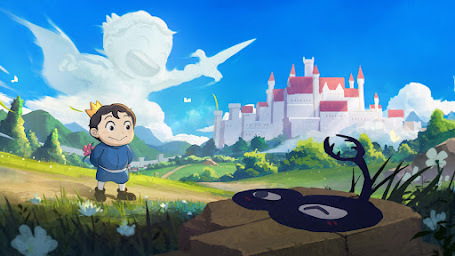
I am a MASSIVE simp for this show. If you often find you share my taste then watch it.
Quasi-Disney aesthetic. Deaf-mute weak boy-prince heir to the throne in fairytale-paracosm faces the 'Ranking of Kings', basically a league table of kings, except that is barely the subject of the first series, instead it’s a mythopoeic deep-dive into the conflicting characters and paradigms of a range of characters rooted in Fairytale archetypes but which grow far beyond their simplest incarnation without losing that essential rootedness.
The first interview I googled about this had the interviewer banging on about "how you subverted the Fairytale elements" FUCK OFF YOU FUCKING DRONE, DOING THE GOOD VERSION OF A LOW-STATUS FORM IS NOT FUCKING 'SUBVERTING' ANYTHING.
(ZERO Pederasty so far, GET EXCITED BOYS LETS GOOOOOOOO)
Purity of the Boy - 10000000000% FUCKING PER CENT BABYYYYYYYY
Odd Taxi

Good. Basically a Tarantino film made into a series, or more an Elmore Leanoard novel made into a series. The people are animals.
Method of Victory;Decency - 90%Specific Brain Damage Perceptual Superpower - 9%Breath Control - 1%
Boy Purity - subtly conveyed but hitting 80 or 90% purity
Fire Force
Absolute banger first few episodes. Fairly good follow up. Semi-sci-fi near-future cathspolitation. Everything is on fire apart from Japan and even that is on fire a bit. Pyrokinteics are being born and the better ones are trained to stop the victims of a plague of apparently-random auto-combustive zombie demon outbreaks. Could the giant powerful catholic new religion that controls everything somehow be behind things yes probably. Can the creator keep coming up with new ways to use Pyrokiniesis. Yes again.
Method of Victory"Going Beyond" - 60%Breath Control - 20%Power of Friendship - 20%
Pureness of the Boy - mid-range purity
My Hero Academia
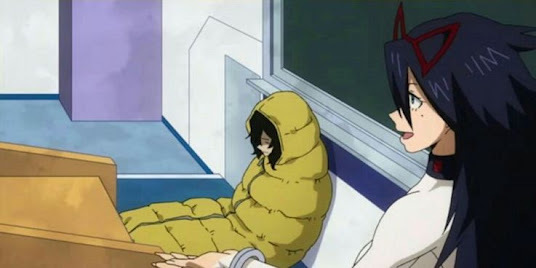
The old X-Men cartoon but its anime. Feel like this is a normie take. Maybe I should be ashamed that I am still this into capeshit but I am who I am I guess. Fatherless neurotic gets SUPERMAN AS HIS DAD!! AND HE TRAINS HIM TO BE THE NEXT SUPERMAN!!!! Combined with the X-Men danger-room sections but that’s the main story, plus tacit analysis of 'heroism' and how a collectivist society deals with Burgerland levels of freedom and individualism because now everyone effectively has a gun all of the time. Answer - everyone is banned from using their superpowers except a cadre of Heroes who are basically celebrity cops taking down anyone who breaks the rules.
Method of Victory"Going Beyond" - 95%Breathing/Energy Control 2%Power of Friendship - 3%
Purity of the Boy - High level. 99%
One Piece
There are a thousand or something episodes of this, I have seen five, it was ok
No stats on this so far. But also no Pederasty.
Boy Purity - highish, say 75%
Jojo
This is very popular with the yoof about two years ago? I have seen some of the first season, it was ok, people say that’s not the best one? Just go and re-read Sontag on "Camp" and "Kitsch"
No Pederasty so far but very, very very gay. Acceptable.
Method of Victory
"Going Beyond" - 50%Breathing Control - 50%
Purity of the Boy - 90% at least
 Check the stats, he's far from the goodest boy
Check the stats, he's far from the goodest boyAttack on Titan
Hans are we the baddies? Yes and so is everyone else. basically Fullmetal Alchemist with Giants. I am loving it and waiting for the second part of the last series to be done so I can watch it on one go. NO SPOILERS!
Purity of the Boy - oh no
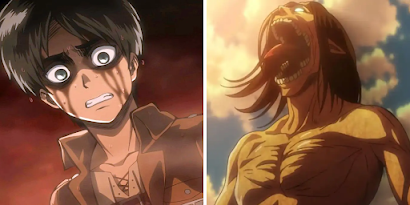
Mob Psycho 100
"Indy" feel, (whatever that means in anime), Psychic boy deals with school and psychic warfare with the help of his conman-with-a-heart-of-gold boss who pretends to, but has no, psychic powers. I like this one.
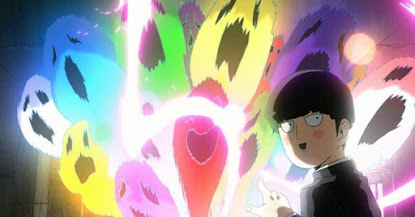
I have only seen the first series so NO SPOILERS
method of victory;
"Going Beyond" - 95%PURE HEART - 3%Power of Friendship/mentorship - 2%
Boy Purity - 85 to 95 per cent
Slime
I became a Rudyard Kipling Poem In Another World.
Decent but virginal semi-failure becomes low-level monster in a fantasy world BUT HE IS SECRETLY THE MOST SUPER-POWERFUL CREATURE EVAARRRR HOW IS THIS DIFFERENT TO ANY OTHER ISEKAI POWER FANTASY? Its basically decency porn. What if a good person tried to do the right thing in everyone’s best interest and somehow it worked. If the FullMetal Alchemist/Attack ON Titan and somewhat MHA are the historical-moral-maze, generational-guilt, no-sane-escape themed animes this is basically Little House on the Prairie, or early Superman. "Ha ha I like you slime, at first I thought you were just a slime but you have impressed me with your courage and decency, I will reconsider my evil ways". You fucking bet you will buddy. Increasingly besieged by anime titties, and also a Lolli. Thanks Nihon.
method of victory;Decency - 90%"Going Beyond" - 5%Metagaming - 5%
Boy Purity - a straight 90% if you are willing to ignore the elf tits

Pederasty - high
Demon Slayer
The purest possible boy with a tragic past and insane weapons and sucide fetish FIGHTS DEMONS. But WAIT, did this particular Demon ALSO have a sad and tragic past which lead them to be easily redpilled on becoming a demon and will we get a flashback as they die in which they recognise and come to terms with their past and perhaps also thank the CHILD who just SLAUGHTERED them? Yes, yes we will.
Method of victory;
"Going beyond" 60%Breathing 25%Magic Sword 15%

Purity of the Boy - an absolute clear 100%
(Pederasty levels - he carries around his sister gagged in a box)
Belle
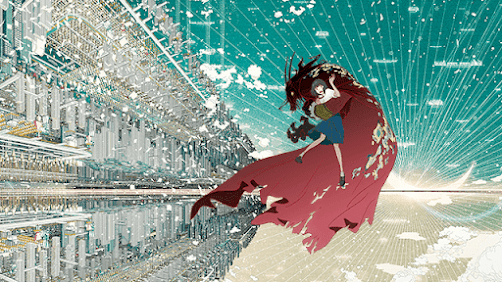
If I hadn't seen 'Summer Wars' and 'Your Name', and/or was a teenage girl, I would think this was the most amazing animation of the last ten years but I have and am not so I just think it was very good. Beauty and the Beast, Virtual World, Young Girl, Tragic Backstory, Coming of Age. Good anime. No complaints.
Method of victory;
Decency 20%Hyperintelligent best friend 30%Singing 50%
January 29, 2022
Friendship ended with....
whoever my previous favourite sculptor was. No idea really, Hepworth? Some un-named Medieval gargoyle-former?
Because now Akishi Ueda is my best sculptor

Twitter isn't completely awful, I actually knew nothing about this artist, not even their name, but was drawn in through the algorithm showing images, links and suggestions presumably based on people I was following.

(This guy in particular reminds me of myself.)

From the links and images I saw an art book was being made and that it was not horribly expensive, and so a purchase was made and thence utterly forgotten about while the book slowly germinated and then slipped across the seas.

Ueda (Akishis?, I can never get Japanese names the right way round), work runs from the beautiful nightmare to the somewhat sugary, probably you can guess which arc of that I prefer more, but all of it is dreamlike, somnolent, the halls of Morpheous open up and processions come forth, all quietly intent upon their own journeys and purposes.

Children dreaming of kings or kings dreaming of children, comfortable terrors.

Many such snouted creatures, they remind me of Baku the dream snaffling monster.

Many Fairytail Riders, creatures like men riding wonders sprung from the impossible paradoxes of a peasant grandmothers descriptions of an impossible beast, yet made real.

Or common figures and characters from parallel-world Fairytails, or visions of us in the dreams of the impossible creatures that might exist obverse to us across the wall of sleep.

There is an instagram here
And you can get the book..

here
January 22, 2022
Corpse Fishers
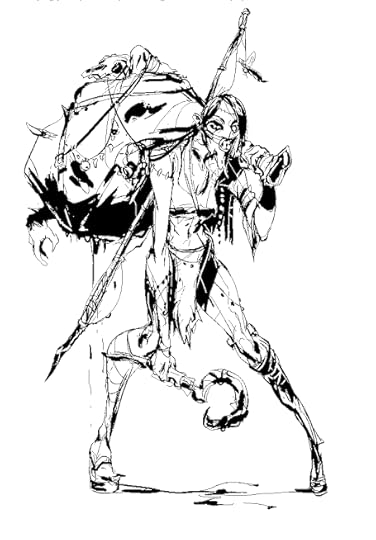 Art by Alcopopstar but if you have been following "Queen Mab" you know that.Hear
Art by Alcopopstar but if you have been following "Queen Mab" you know that.Hear Tapping on the pipes, poking and prodding. Muttering and rambling. Otherwise they move quiet, even with a corpse across their back.
Smell
Even in the crypt, the stink of drowned rotting meat is particular and strong.
“Ay the scent sticks to thee after a while”
See
Tottering, staggering, smiling. Grinning and whistling. Tall for a crypt-dweller, strong and rangy. Holding their hook of office. Bestrewn with twine and hooks, straps and bindings. Who knows what they have in that mess on their back? Rank with shit yet unashamed, they’ll give you a wink.
Names
Flexible James
Tankard Fools
Grit Feeble
Twist Valve
Small-Bird Chips
Nit-Fiddler Franz
The Honest Corpse-Fisher
Happy fellows(?) who take payment in corpses, always thrilled to be given one “for free”.
Cheery types who likely won’t necessarily try to eat you if they randomly bump into you.
“Corpse Fishers not Corpse Farmers, that’s the Guild way”
Pretty great guys or whatever they are, unless they find you poaching.
“Seen any meat my lovelies?”
“I’ll take that off your hands, no questions asked.”
“Now that would be telling..”
“Whats this thingy now? Now that’s a tricky thing….”
“Well now, what say thee, what see thee? Hows thy meat?”
Gossips
Eager traders of information, they want to tell you the news, and they want to hear your story.
They will listen your tales and share a few of their own. If you need information, they may know where to get it, or know something else useful.
This is all to get a clear picture of your doings – they don’t care at all about the High Ladies or politics, all they care about is threats to the Saints. If you don’t pose a threat to the Saints, and hold nothing that might do so, then they don’t care at all what you do – except as gossip and tales to chat and trade over.
Only malificarum matters to them.
Maleficarum
The semi-secret duty of the Corpse-Fishers is to stop any dangerous tech before it reaches the saints. Specifically any radioactive material, active nanites, bio-phages, causality weapons – maleficarum.
“Whats this then my lovely’s? Looks a bit tricky…”
if a Saint is damaged they will pay in their own flesh.
The Corpse-Fishers have an ‘arrangement’ with the Hydraulic Church and Court of Melinoe. All malificarum is handed over and in return they keep the Corpse-Fishing rights.
Abilities
“Identify”; Can spot and identify dangerous hypertech. Is that magnetic bottle full of deadly nanites? Is that butterfly a secret carrier of a viral plague? They will spot it. But they won’t necessarily tell you this.
Their aim is to control and restrict these things, especially to stop them reaching o damaging the Saints. They will only tell you what something is if that is more likely to get it out of your hands and into safer ones.
“Disappear”; In the Crypt a Corpse-Fisher can always find a way to hide or sneak away, if they have but a moments distraction to work with.
“Survive”; A Corpse-Fisher will survive one apparently-lethal attack per round. They usually play dead and use the time to “Disappear”
Schemers
If they can’t take Malificarum from you directly, they will manipulate others into doing so, or directly inform the Hydraulic Church who will then set themselves against you en-masse. The Corpse-Fishers are well-respected and can destroy the reputation of others in the Crypt if they so choose.
The Corpse-Fishers Guild
You have to be part of the Guild to pull corpses out of the flow. Unless caught in the act this is near impossible to prove.
The Guild gets angry if they hear of anyone breaking their claimed monopoly.
Need; Good relationship with Corpse Fishers, Hydraulic Monks and Melinoe. Proven skill in Corpse Fishing and keeping secrets. No claims against you of eating the uneaten things.
The Test; Find and bring three specific corpses to the testing ground before the hourglass turns. The Guild places these in advance and the placement tests the situational knowledge, cunning and luck of the applicant. It’s possible for an applicant to bring other corpses so long as they match the description given, this considered the “luck of the pipes”.
January 18, 2022
I; Midwit
What purpose does this illusory self serve? It must do something, because everyone has one, do our positive and negative illusory selves duel in the night? Is it just essentially impossible for us to truly know ourselves so all we can do in reality is vaguely triangulate between our positive and negative illusions? By what necessity is our true self hidden from us?
As an act, perhaps of penance, or as a stunning and brave confession of being neither stunning nor brave, here are my most recent midwitisms THIS IS WHO I AM AND I ACCEPT THAT
Failing to finish Daphne Du Mauriers 'Rebecca' because it was "stressing me out".Being unable to sit all the way through two-hour films on streaming services even though I was somewhat enjoying itPersistently watching anime, and not even the classy stuff but the normie shit. I am still watching My Hero Academia and have not completed 'Odd Taxi' even though it is verifiably more complex and original.Being concerned how my hedge looks from the street.Being pleased at neatly compressing recycling into bin.Other books given up on - several.No longer writing reviews for each book I read, happy to have "gotten through them".Getting wasted to watch Marvels Shang-Chi and enjoying it...Putting "shower" on a daily to-do list for an "easy win" and still not showering."I need to finish reading my twitter stream.""I could have a YouTube video on while...."Sort-of enjoying Amazon Primes 'Wheel of Time' series. (I'm pretty glad I don't actually know anything about Wheel of Time because if I did I'm sure I would be STORMING about whatever the fuck they did to it...
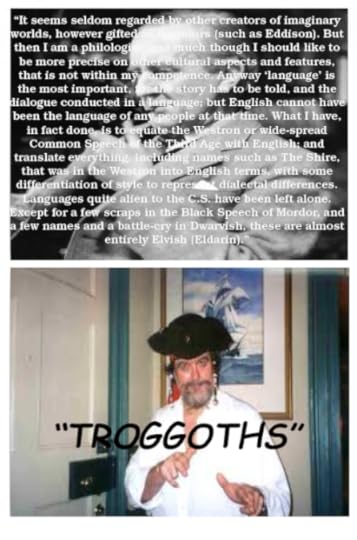
Having a mapping-and-navigation problem on recent project and eventually going "fuck it, just use Apocalypse World". (Pre-lapserian Patrick worked out an entire method for navigating three-dimensional space in VotE).
This post is a no-shame zone. The confession box is open below. Feel free to comment with your own confessions on sinking into comfortable normiedom
January 13, 2022
The First Amber Court
Before it was an Empire, the Court was a Kingdom, an Ideal, a warren of rooms in the Crypt of an unbuilt Cathedral, and before that, a room, panelled in Amber, the birth point of the concept, and the conspiracy which begat that strange devising.
"What is known was once suspected, and what suspected was once known." - Kausker Wood.
Yet this we think we know; K-----1 the Duke of Lataam, possessed a chamber2 panelled in amber, and it was here, shortly after the 'Miracle of Hoögst' that the first secret meetings3were held, and the germination of the Amber4 Court began.
 Apocryphal image of the Amber Court in its Late PeriodFrom 'In the Memories of Stars'
Apocryphal image of the Amber Court in its Late PeriodFrom 'In the Memories of Stars'
1. On Redactions
Mind-plague and Cursethought still hover round the record of these times, especially of the later wars of the Amber Court, the Otherworld Wars and the Red Shift, such that only the most pure of our order are permitted to read, write or even consider these matters. The more conservative amongst my order would happily launch a Mnemarchy Crusade to conceal or destroy allrecords - so greatly do they fear the contagious notions, the "vermin tales", of the Red Shift - that they may spill over, hide themselves in nearby concepts and thereby slowly and subtly re-infect the Lords Causality.
Here no such redaction has been made. The son of Duke K----- of Lataam, he who would become "The King Beneath the Mountain", "The Twice-Redacted King" and "Lord of the Amber Court", possessed such power over the Lords Causality that, along with many of the higher-ranked members of the Amber Court itself, his name may not be directly written, remembered or considered. This enchantment, or alteration, was, and is, so powerful that it has overflowed even to the identities of that individuals parents and nearby relatives. All we can say of Duke K---- was that his name began with K. His name is written in some of our records but neither I nor any conscious being may read or comprehend it.
2. On The Chamber
A room in the Ducal palace or fortress of Lataam panelled in amber and fossils. A twin-walled room, silent due to its inner amber walls, paved with polished trilobites. Servants and guards moved behind the amber panels, in the space between the walls bearing lamps.
The shadows of strange insects, curls and spatters of ancient catastrophe and that of one creature something like a mouse, along with the warping and shifting of light as it smoked, more than shone, through the wavelike thickness of the amber walls and was refracted through the carvings, passed across their features of those who met within. Both the sound and nature of the occupants was disguised. The vague shape - but not identity, of those within could be perceived, and nothing heard.
3. On The Meetings
One door lead to the dukes apartments and the other to the hedge maze in the garden - a petty labyrinth - but many early meetings were held during parties and gatherings and being "lost in the maze" was sufficient reason to excuse an absence. The great variety of guests and the double-disguise of a masked ball, along with the covering social camouflage of a hist of petty intrigues, clearly sufficed to disguise both the participants, and even the very existence of the meetings themselves.
4. On Amber
The room was an assembled treasure of the Dutchy of Lataam - partly inherited from the lost Dutchy of Latöm - partly received in dowry on the marriage of Lady Z----- of Frost to Duke K-----. Duke K----- dedicated himself to collecting such amber treasures for much of his life, finally completing the room roughly 15 years before his death.
Born of strange places were they, torn from seams and tipped from fossilised trees on shores left bare by suboceanic shock. The treasures of tribal kings, smoke-stained, ancient even to them. The amber panels dated from many ages and even the panels themselves were composite elements of a composite room.
Duke K----- allowed re-carving for a more coherent whole. The leering, primitive ancient carvings of the amber mixed and jumbled, overwritten with the forms and shapes of many faces. The ghosts of those primeval forms remained hidden in the shifting yellow light, waiting only the just-so crossing beams to reveal themselves again, and beneath these overwritten patterns watched the still-more ancient emissaries of deep time - the only witnesses to a new era of hope and fear.
January 5, 2022
"In the Memories of Stars"
There wrote a scholar in a voided land. The armies tipped into the rivers to stain the sea red, the peasants ploughed into under their furrows, starved in their hearths, the nobles withered, twitching from the teeth of gnawing rats.. all tumbled away to nothing like a cup emptied from a towers top, leaving beneath it not a splatter, nor a stain, wine drunk by the howling wind
In my dream, which came strangely like a memory, I knew this place. It was the Solar of Irrilyia, a once-sacred chamber I was taken to as a child, built by a long-fallen Prince as a sad offering to his unmarried mistress so that, though she may never be Queen and her children bastards all, yet she might occupy the topmost place in all the lands of Frost. In time, and as dynasties rolled each upon the other it was abandoned, transferred, preserved first as a power, then memory.
When I saw the Solar, once and still the highest room of the tallest tower of the most sky-deep city of Frost, I recall it full of sunlight as a jewel is full of shine. Yet in my vision no sun wheeled nor stars shone, only a pale lantern and a guttering fire
In my dream I entered quietly, as a child, yet I was no child and moved as if I knew this place well, had walked it before, not once but many times.
In the Solar one black figure sat, robed in black made darker by the shadow of the lamp. They did not turn to me but stayed, sitting, crouching, hunched across the desk which occupied the centre of this room. All else was shadow and gloom, glimmers of firelight catching on the tumbling flakes of snow which drifted from a fissure in the roof
Near the black scribe was bound an orange flame, one locked in the belly of a stove, an iron tripod of the kind soldiers use, one leg was gone, it was propped, I saw on piled books of ancient make with slate and wooden covers though the topmost charred slowly, pressed against the pig-black iron. All was unsteady, the stove wavered, the chair and table tapped, shifting a little under the pressure of each written line as it crawled towards the parchments edge, and the weight of this black writers outstretched hand tilted the table, and so the scribe put out the other arm to grasp the tables side.
The scratching of the pen, like whispers, followed by a soft "thunk", a wheeze, as of from ancient lungs or cleft lips, then "thunk" the table tipped to rightness as it seemed the writer rode it through the black night like a ship in storm. And with this, a squeal, very small, as the chair tipped and bowed a little at each movement. Ill-made tools for an ill-made man for under all was breathing which seemed sore labour.
The whispering pen, the "thunk-thunk-squeal" and the labouring lungs, all sounds bound like slaves or spirits to the fierce unending flow of the text, unseen to me, a hidden river yet it pushed and rode the writer and commanded every effort of this desolate and fractured place as if a demon, possessing but one vile and ancient servant, unable elsewise to touch at all our material world, stood invisibly and with imperious will, lashed, howled without sound and commanded "Write. Write! Write!!" Such was strangely fearful in this little sight; a black robed-man writing in a high castle.
I stepped within, or I remember that I had stepped in so, in that old-old story of the Pale Scribe which surely I remembered now.
Cold was the Solarium, yet not bare. Books were piled against the walls, scrolls tacked and jammed in gaps and between piles. The wind panted outside and pressed fingers against the windows, once clearest glass, now blocked and shuttered, curtained by rags and browned tapestries. Yet still some wind keened and a whispering slip across the darkened floor like a carpet of snakes. Papers and scraps, pages and letters, fragments, skittered like leaves, flowed like embers on the cold air.
Why this word-hoard? Were they relics? Treasures? How? In the whole of Samaris were these charred and misbegotten scraps somehow stolen, or preserved?
"What do you here? What place is this, and when?"
So I wished to scream and cry out, to ask this grim librarian.
Were they mad this hermit? Or was this all, the last remains of Samaris and Frost? Was there anyone still who knew the story of Illyria, or that this was her room and why it was made? But I remembered, or saw, I had seen somewhere or been told, that in this scene, this story, nothing was spoken or said, for one would not, one could not, and so both were silent.
He sighed then, and the black shape paused, shifted. It writhed I think. The Demon did not want it to be still. The words called, like a black river of ink which if dammed must burst. But I think there was a moment of silence, of recollection, as of an old, sad memory, a stillness of regret. Then again, "scratch-thunk, scratch-thunk-squeal" and the labour of breath. I think if this scribe knew of me, and I felt somehow it did, and yet did not, but that it cared not at all, intent upon his text here at the end of the world.
It.
Was it truly pale?
I did not want to see its face, or to be seen, but I knew that, as dreamers know, that I must read.That was how the story went and would go, that was the reason for the memory, why it had been passed on. Or the vision... But I must read nonetheless, for to do otherwise were like a joke half-told.
Though I saw and could see nothing of the outside world I imagined a black horizon and red fires burning under stars which swam and melted like ice, like tears.
The wind stirred and in the shadow of its sound I crept. I breathed through open mouth as a child does creeping in a game, and like a child I felt great dread, so much that my thighs itched and quivered as if holding on a climb, for all that my tread was soft.
He stank, though the cold hid it. He stank like a leper. Rags folded him and he was hunched beyond belief.He seemed to be in pain, or past pain, for I think for him no deed or moment lacked it.
I was within the fires red glow, and little heat it gave. I saw the surface of the table.
"Scratch-scratch-thunk"
And the "skree" of the chair as he leaned his bowed body and reached, forcing limbs which seemed to which to curl upon themselves, like ferns, pushing them, his withered self, bowing to force the grey half-bitten quill to the edge of the table, the edge of the page.
The hand.
Was, could this be a mans hand?
So white. White as the moon and vile as a wound.
What had been done to him? What had he done?
A punishment? Burning. Perhaps acid, or feathers and tar. Were those still fingernails or something else?
I looked down, in the vision, in the memory of the tale I remembered that I had done this, down at my own right hand. It was normal, and shared no mark or blemish with that thing. There was no way, it would not, I would not become…
So, unspoken fear assuaged, I stepped, only a little step. The rank beast stink and the pitiful breath. The "scratch-scratch-thunk" resounding now like hammers. I was right behind him. Right behind his shoulder, invisible, unseen and even if he should rise, should turn and see me, I could hurl him down like a dog, withered as it was. This was the secret I was bound to see. The black words crawled across the cracked palimpsest.
It was my tongue, not the one in which I write to you, but that of my birth, in an educated, elongated secretary style. My eyes darted, sections, headings, repeated phrases, amber, the amber court, chrysalis wars, ruin, great working, the names of great nations.
What dark history was this? Not mine, thank god, but some names I knew. Oderlane, Day and yours, or your title at least.
"The Ruin of the Amber Court"
All this was written in past tense, and grimly, as if too long done, but I saw horror, vague and terrible as if from scripture or nightmare. I read of shapeless legions, of lands I knew yet "turned from any Path and Broken", of rains of corpses, of generations cursed by dark foreknowledge, of lands where the babes were born dead, yet sentient and grieving themselves, of cities tipped into the "Fabric" and make alike unto curses, or worms or dragons of myth; "and Redgaar turned then at the time of Third Turning and broke its Path and the Cord of its Peoples and moved behind the Fabric as a hungry ghost which swims in black water and was cursed". I read of dreams made vampiric, of tilted skies which spilled forth quicksilver men that hated all, of the harrowing of Time and ever and again, repeated; "The Ruin of the Amber Court".
I leaned forwards, puzzling and darting, lost in dark wonder and frustration. What was the Amber Court? For then I had never heard the phrase.
I leaned and He turned, and saw
Or just remembered. His eyes searching mine, or looking through them. Could he see me at all?
What before I feared in horror I saw now in inexpressible sorrow. A face so altered and unmanned, eroded by tortures and sculpted in pain, yet, regret, regret and yearning unto madness, as if in in a call or heralds cry, his face alone begged me; Do not let this be.
Did our eyes meet?
I woke from my vision, or came from my memory, weeping. So sad, so sad and fearful yet I knew not what for. For a fantasy. I could neither be consoled nor speak of what I had seen. What could I say but that I wept for a dream I could not well recall?
All this lay within me, for how long? A week? A month? Though the memory slowly faded, I wrote notes, made images and verse for, though I could not speak of what I had seen directly, I could freeze instants of it through art, like nails in my soul.
Only weeks I think.
Can you imagine now, or begin to, what flowed through me as I deciphered your letter? (By my own hand, for I would trust no other). Letter by letter, phrase by phrase. Of what slow nightmare, no, for there was no shadow or enchantment to it, but only horrid clarity, like a deadly sentence handed down by a mediocre judge.
Those Self Same Terms
The Exact Words
And the very concept! Not in history, but as a plan! A yet-to-be! Can you understand? I wish I wish I wish that you could see my visions as I saw them, but I know you will doubt, and if not doubt, defy. Such is your nature. You are fearless, and there is a great terror in that. God made fear for a reason, we do not think it is a blessing but it is. You will doubt and see only a warning, and you will plan and devise, thinking to overcome. Such is your way, your nature to the core.
Still I implore you. I beg you, if you have ever respected my talents, as your words would suggest, if you can believe me in any way. Do not do this.
There is still time! Fate is not yet set. Whatever horrors you have seen since Albraneth and the Canticle, whatever winding paths your Seers have put before you, I know you are outraged by these times and their falseness, by the ignorance and hypocrisy, and yes I agree with you that Oderlane is mad and likely a Sorcerer, and his beasts both fanatical and corrupt. Tet still, I beg you, do not do this thing. I have seen it and it is terrible.
I will not join you beneath your mountain.
I wish I knew words to move your soul but I fear none such exist.
Peace to you in all love.
---------------------------------------------------
Apocrypha of "In the Memories of Stars". Copy of a document said to have been recovered, year 672, from the ruins of lost Samaris. Transcribed and included in the 732 First-Block-Printed edition. Retained only as Apocryphal as all dates and names either removed or lost and provenance of original impossible to ascertain.
December 27, 2021
A Glossary of the Amber Court
Great swathes of time and chaos separate us from even the Age of the Later Court. Much has been lost, the Court itself was swathed in deep secrecy during its Early Period, purely as a matter of survival, and in its Later Period became riven with intrigue, factionalism and obscuration. Nevertheless I can present to you a brief list and explanation of some of the more obvious terms which will directly apply to your studies.

Needing. A simple catch-all term used by Seers to describe their work in altering Courde or Fate Lines. Anything from the subtlest Notching to the most brutal Galon would be described so, usually within an ‘Atelier’. i.e. “What’s your aiguilletage today?”
Almoner
See ‘Haptic Ranks’
Broadly responsible for the well-being of an ‘Atelier’or specific tasked group of Seers. Originally based around consumables, food, shelter for them and their families, though also interrelated with security and perhaps ultimately a political role. Of necessity, the Almoner must be well versed in Amber Court politics. Whether the Almoner is protecting, controlling, imprisoning or supporting the Atelier is up for debate.
Amber Mystery Disciple
See ‘Ocular ranks'
The fifth ranked grouping of Amber Court Seers. The last rank at which one would be resident commonly outside the Court itself and the lowest rank at which one might lead an Atelier.
Amber Soul Disciple
See 'Ocular ranks'
The third rank of Seers in the Amber Court. Almost never seen outside the Court itself until the later part of its history and those individuals have their own names and legends. An Amber Soul Disciple would be the leader of at least one Atelier and possibly several.
Autocephaly
A single Seer or a group of such, freed from organisational hierarchies and instructions on where and to what ends they should focus their attention. Very rare at lower levels of the Amber Court but in some sense all highly-promoted Seers attain a degree of Autocephaly in their prognostications, though they are expected to dedicate their secular or Hapticattentions to their Court Duties.
Since most, perhaps all, highly promoted Seers engaged in meta-prognostication of the groups and matters under their immediate purview, it’s clear that even from the start, any strong divide between secular or ‘haptic’ responsibility and transcendent or Ocular duty, melted away towards the top of the pyramid.
See ‘Blind Melody Disciple’ for a Court Rank assumed to engage in a high degree of Autocephaly.
Degrees of Autocephaly are thought to be one of the main divisions between early Houses.
Atelier
The core organisational grouping of the Amber Court. An Atelierwas a group of Seers under the direct instruction of a Seer of Amber Mystery Disciple or Amber Soul Disciple Rank at least.
Ateliers could be dedicated to particular situations, groups, individuals or fate lines by the Pursuivant or Grand Pursuivant, or might be part of a larger, distributed array of Ateliers working under a common leader of Preceptor level or above, or may even have some degree of Autocephaly.
One can think of an Atelier as a closed room, or group of chambers in the Amber Court where a select group of Seers gathered to plumb the depths of a specific Warp or Courde. This room, and their work in general, would be separated from the outside world and from the Amber Court as a whole by two guards, the Poignard Disciple within the chamber and the Tyler without.
Information control was deeply important to the Amber Court and Ateliers were not meant to intra-communicate, neither were the instructions sent to them or the information issuing from them meant to intersect with the instructions or perceptions of any other Atelierexcept via the correct and singular authorities dedicated to that task.
In the early years of the Court this method seems to have held largely true (though with some gaps and loopholes even then), by the Later Period the Court was so riddled with intrigue, factionalism and complex webs of meta-prognostication that its widely assumed the Ateliers were “wide open”, though the forms of Poignard Disciple and Tyler were still followed.
Bias
Has very specific meanings highly dependent on context, but very generally, a term used to describe the range of possibilities in which a particular Courde or Warp either express itself, or diverge. (Though, oddly, almost never referring to the Selvage.
Usually when referring to a single Courdewith a hard Selvage, the bias describes the potential range of ways in which the known fate may be expressed. i.e. if Duke X has a Courde with a hard Selvage in two weeks, but with a great Bias, then the Seer, or Atelier, is strongly certain that this individual will die on or within that timeframe, but very uncertain of how that death may occur.
Conversely, an uncertain Selvage with a short Bias, would mean that Duke X may live a very long period of time, but when he does die, it is almost certain to be by the method or in the manner predicted.
When referring to Warps, Fate Lines for larger groupings, the definition and usage of 'Bias' becomes more complex and situational.
Blind Melody Disciple
See 'Ocular ranks'
The fourth ranked grouping of the Amber Court. An unusual and unspecific rank. Almost never given leadership roles but neither required to be resident within the Amber Court itself. Blind Melody disciples were expected to rove far and wide across the world, taking on many roles. They may be a form of intelligence agent of direct action operative for the Court, or head up or advise groups of such.
Technically this should never have occurred as, according to Court Law analysis and effect are separated into the Ocular and Hapticarms of the Court and should not intermix. What 'intelligence gathering' looks like to a society of Seers one can only guess. Some individuals advanced quickly to 'Wild Melody Disciple' rank and remained there all of their lives while others skipped the rank entirely.
Broderie
Altering or managing the appearance or 'seeming' of events regardless of the Courde, Warp or Fabric. i.e in classic Broderie, the manner or seeming of events might change a great deal but the fate of not one insect will ultimately alter. Seers disagreed deeply on the importance of Broderie, initially it was a low-status art and those of mid to high rank eschewed it, yet ultimately many High Preceptors were initially deeply skilled in Broderie and maintained silence on the subject, speaking neither in defence nor condemnation of the art
Celestial Master
See 'Ocular Ranks'
Actually the seventh and probably lowest ranked grouping of the Amber Court. Still considered to be by far superior to the common weal of Seers in capacity. A ‘Celestial Master’ might primp themselves about amongst the colleges of lesser Seers who gathered around the Amber Court, particularly in the Later Period, but would ultimately be regarded as an apprentice within it, perhaps a joke by the Rightly-Guided King in this naming.
Coudre, Thread, Fate
A Fate line, classically conceived as the destiny of a single individual or some other simple, unitary identity, of perhaps an object, like a sword, or in some rare cases larger identity groups so long as some other very strong element unifies their fate lines i.e. a group of individuals in a single lifeboat on an empty sea, or trying to survive in the snows of Nehei.
Decatize
'Priming' Courde, checking for existing Warpsand Wefting, if necessary, cutting any warped Courde. Preparing a fate for Alteration. In many cases to Decatize is assumed to be much easier in the case of nonentities, newborns, unimportant individuals they young etc, and to get harder and harder to the degree in which people age, gain status, form connections with others and become more individual. There are however, many counterintuitive examples. Complaints over failures to Decatize proliferate in the Later Period.
Edge
Philosophically the conceptual barrier of inter-related fates beyond which no Seer can meaningfully alter anything. More commonly used in the manner of specific Atelier and Seers remarking on the limits of their own ability regarding a single weave "I/We have hit an edge".
There were always debates within the Court as to whether there was actually an Edge in the conceptual sense and these ultimately added to the fissured which accelerated the proliferation of Houses and which, in part, defined the structure of the Later Prescience Wars.
Entoilage
To 'Augille' a Warp into the Fabric, the structure of causality, producing strong feedback loops between the structure of the desired fate and highly non-alterable events, beginning with things like the actions of the sun and stars, vulcanism, etc. Entoilagecan effectively seal the fates of large Warps but carries enormous risk as the nature of the feedback loops means that if the Warp does shift, instead of being strengthened by the substructure of Causality, it may instead alterthat substructure.
Entoilage was considered a high and subtle skill for much of the History of the Amber Court.
Fabric
Causality. Fate or time itself. The structure and direction of events regardless of human action. Though in many cases Seers will refer to 'Fabric' or 'The Fabric' as being simply a deeper and more certain, less alterable layer of causality than the one they are currently working on.
Galon
A method but more usually described as an action, i.e. “I/he just galoned the fuck out of it. Don’t put it in the report”.
Jamming a pre-existing small Warp or Courdeinto another larger warp with little preparation. In a sense a form of crude Entoilagebut instead of interweaving the chosen Warp with deep Fabric, one simply appends one smaller Warp to another not much deeper and stronger than itself in the hopes that “Nothing will go wrong”, or if it does, that no-one will notice it was your fault. Carries all of the risks of Entoilage but with much greater chance of failure.
Grand Pursuivant
See ‘Haptic Ranks’
Administrator of all Pursuivants throughout the Amber Court. The seal of the Grand Pursuivant guarunteed physical access to any Atelier, at least technically through the Tyler, though the Poignard Disciple, in thier capacity as member of the Atelier, may potentially deny such access. A rank with only grew in power over the Ages of the Amber Court and which clashed often with the Almoners.
Great Emptiness Disciple.
See 'Ocular ranks'
The sixth ranked grouping of Seers of the Amber Court. Little is known of the titles meaning.
Haptic Ranks
The procedures of the Court were initially designed to strongly separate the ‘Ocular’ arm, made up of Seers an dealing only in information under highly controlled circumstances, and the ‘Haptic’ arm, made up of non-Seers and largely tasked with the security (and perhaps control) of the Seers and Ateliers.
There were many more than described here, including whole schools of Scribes, (its estimated there were perhaps five Scribes for each Seer). More details can be found in the respective entries.
Almoner – in charge of welfare of Seers or Ateliers
Tyler – originally a guard to the door of an Atelier
Pursuivant – originally a backup to the Tyler or assistance to the Almoner
Grand Pursuivant – Master of Pursuivants
Houses
Seem to be socio-political groupings within the Amber Court itself, crossing between Ateliers and Ranks. In the Early Period of the Court these are referred to as intellectual and philosophical concepts, though in the Later Period they grow both in number and the extent to which they are mentioned. Some later correspondence seems to place the various 'Houses' above even the Ateliers and Preceptors in importance. In either case, little is known of their nature, purpose or views.
Dominant in the early period and continuing to the middle period;
The House of Glass
The Bright House
The Tripartate House
Minor or non-existent during the early period, growing in power and dominance from the middle to the Late period
The Deep House
The Suns Perfection House
The House of Peace
The House of the Orthodox Sun ('New' Bright House)
The Glass Blade (abjured)
The House of Ghosts (abjured)
Final Clarity House
Perfected Mystery House
The Lemniscate House (abjured)
The Ouroboros House (‘New’ Lemniscate, twice-abjured and records purged)
Flowing Blood House (abjured)
House Invisible (denied)
House of Amber Flies (abjured, condemned)
Notch
An action and method; ‘to notch’.
Cutting or removing fate lines at the 'edge' of a Warpto produce a 'Neat Warp', more stable and less likely to fray and produce Bias. Essentially shifting or breaking the interrelationships at the edge of a shared Warp so that the fate of the Warp is more strongly separated from the common Fabric. A very difficult and subtle art as in many cases, notching can also make a warp unstable, yet to perform it exactly encourages a warp to curl in upon itself yet without any obvious trauma.
Ocular Ranks
(counting upwards in importance)
?. Poignard Disciple
7. Celestial Master
6. Great Emptiness Disciple
5. Amber Mystery Disciple
4. Blind Melody Disciple
3. Amber Soul Disciple
2. Preceptor Numinous
1. Preceptor of Glass
Patron / Plan
Few Aiteliers would begin the Aguilletagewithout first assessing the shape of the Corde, Weft, Biasand Selvage. This done they form a collective plan both of the desired fate and of the Aguilletage used to attain it. The nature of these Patron/Patterns/Plans is different for each Aitelier.
Pattemouille
An expendable Warp, a grouped arrangement of fates used to the point of destruction purely to alter or Decatize the prime Warpor Courde intended. Not always physically destructive as the Court would say, to destroy a fate is not necessarily to destroy the person, (though a fair amount of time it means destroying the person). Intra-Aitelier arguments over Pattemouille could be savage as a Warp carefully conceived by one Aiteliermight be used by another simply as Pattemouille by another.
Preceptor of Glass
See 'Ocular Ranks'
Title of the first rank of the Amber Court. Nothing more is known of them.
Preceptor Numinous
See 'Ocular Ranks'
Second ranks of the Amber Court Seers. Presumed masters of meta-prognostication. Perhaps allowed to directly advise the Rightly-Guided King. Little is known.
Pursuivant
See ‘Haptic ranks’
Has administrative control of entry and exit from the Atelier, though direct control is held by the Tyler and the Poignard Disciple. The Pursuivant might control anything up to a small paramilitary force dedicated to the protection of a specific Atelier or Seer.
Pursuivants were initially intended to remain separate to the Atelier and in some sense subservient to the Tyler, initially conceived as little more than armed backup for the Tyler. The appearance in the Later Court Period of armiesof Pursuivants gives the ultimate lie to that.
Poignard Disciple
See ‘Ocular Ranks’
An unusual role of the armed Seer. The Poignard Disciple was initially a low-ranked, perhaps not even Celestial Master level, member of an Atelier who literally guarded the door from the inside, armed with a Poignard. The same door being guarded from the Outside by the Tyler, an entirely haptic Rank.
This provided a good opportunity for the Poignard Disciple to learn about the work of the Atelier and also about the structure of the Amber Court. Over time the position clearly changed and was often filled by a wide variety of individuals, becoming more of a role than a rank.
Point droit
Jamming something into a Courde or jamming a Courdeinto or around another at the last minute, either due to failure in planning or unforeseen complexities. If someone Point droits your Courde you will usually know about it. The results are usually ‘Miracles’, truly bizarre coincidences, obvious loops and various other obvious non-causal elements.
One Atelier requesting a quick "point droit" from another would be regarded an admission of embarrassing failure. However, in later years it is clear that the Almoners were forced to suppress an informal underground 'trade' in Point Droit between Ateliers.
Selvage
The length of a Courde or Warp in time. For an individual, in most cases, the point of death or discorporation, for a group, the point of breaking up, giving up or evaporating, or death. Though as with all court matters, there are subtleties. Death may not be the end of Selvageand Selvage may not end in death.
Surfiler
if 'Notching' is a subtle and graceful method of separating a chosen Warp from the Fabric and creating a mutually-linked fate, Surfiler is a hasty, even brutal method of sealing a Warpby 'curving back' its edges and using dense, closely arranged fate lines to ensure that no decision pattern allows exit.
Surfiler was not well regarded and if applied to more intelligent Courde-dwellers, would often produce effects highly noticeable even to those bound within the Fabric, such as individuals and elements leaving and then quickly returning by unusual means, rings and totems being thrown away and then being found in a potato, individuals falling into a river and washing up at the next bridge, individuals being ‘lost in fog’ and returning to wherever they came from.
Various forms of crude Surfiler were likely elements in simple Hedge Workings.
Tyler
They duty of the Tyler was initially to guard the door of the Atelier from the outside with force. In the middle and later court periods the Tyler evolved into a more political role, as opposed to the Pursuivants who eventually became a military force and in competition with the Almoners who maintained a purely administrative authority. Tylers were usually highly competent and intelligent non-Seer individuals who traded both on what they did know and could do and on what they might know and wouldn’t do.
There is no equivalent role for the later Tylers in other polities. Armed duellist /ambassador/ factotum/ bodyguards?
Warp
A group of unified or grouped Courde or fate lines, as for a city, a village, a family military force etc. A ‘shared fate’, either occurring naturally or Wefted into being.
Weft
To ‘weft’, wefting together.
Both the means of tying together Courde into grouped fates or Warps and also describing the expressions and extent or 'size' of the resulting Warp.
The means of tying together threads into grouped fates or expressions; In Haptic terms, a general recruiting for an army, putting them all in the same uniform and marching them as a unified group to a particular engagement, has 'made weft', but most Seers use 'Weft' to describe the tying together of Fate lines in ways usually not detectable by mortal senses. Wefting can take place long before those involved in it become aware of it. For instance, two boys born far apart but in particular social and personal circumstances may be 'wefted' with a hard bias, to join the aforementioned military group before the general who eventually leads them even conceives of the idea
The extent or 'size' of the Warp. The number of Fate lines involved; their geographic distance of the individuality of their Fates. To Weft together the fate of a single homogonous village into one Warpis considered relatively simple (the "curse" of Folk Seeing in which a Seer or Wonder-Worker is killed or offended and brutally Wefts their accusers into one Warp with as short Selvage and slim Bias, would be a narrow (easy) weft).
By comparison, Wefting together highly intelligent and individuated persons scattered across the globe, with highly different world views and aims, into one Warp, would, classically, be a wide(difficult) Weft and an act of great skill.
(However, views on this seemed to differ bewteen Houses and many highly ranked Seers disagreed on the relatively difficulty of Wefting)
December 20, 2021
What Reads Like Shit But Plays WELL?
In an act of remembrance for whatever this Blog used to be, and out of interest - plumbing, dredging the minds of my audience, and from my own curiosity, I have a query;
What reads badly but plays well?
Here is a picture for you;
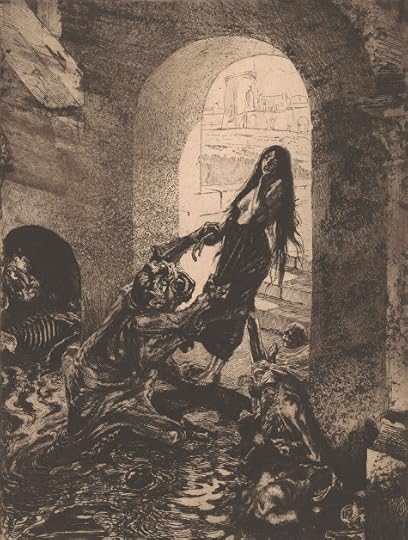 Marcel Roux Offering to Moloch, 1908(ripped off from the blog 'Monster Brains')
Marcel Roux Offering to Moloch, 1908(ripped off from the blog 'Monster Brains')A few examples, largely from discussions I have had with friends who read and used things I didn't like the look of. Castle Xyntillan did not appeal to me at all from the text but multiple people have told me "No it plays like hot shit at the table, great fun." Likewise Ravenloft, the villain-is-ASDA-Dracula, sounds awful to me but again many many people say the opposite in play.
(I leave the definitions of "bad", "plays well" and the discussion of what we are talking about exactly (I'm imagining adventures but willing to accept a reasonably wide spectrum of 'similar things' around that), deliberately open. If you want to talk about what 'bad' means to you so you can define it better then do so, please don't argue with each other over definitions of what 'bad' is, its tiring for me.)
December 13, 2021
a footnote on the Water-Horse Wars
December 5, 2021
Who shall rid us of these Seers?
For if History teaches anything, it is that beginnings are not beginnings and endings not endings. There are no subjects in Nature or chapters in Time.
A question double-mazing for even our memories and records of the Prescience Wars, which raged for uncounted years before the Coming of God and the Years of the Sleep, are partial, deeply affected by the shattering events of the Wars themselves, which sallied forth across the collective unconscious of mankind and which besieged unreality itself - dragging continents of dream into the waking world, not to mention the ever-partial records and histories which descend to us from those times.
Many great events, strange terrors and storied names pass through those Histories.
Of the Siege of Red Rock, which hung like a vile tooth in the wounded air, with men climbing and dying like ants as they clambered over the red stone and fell in ropes.
The Synopticated Legion, ever-drumming, their banners and totems glitched and maddening - for to see their sign and hear their drums was to be infected, altered on the spot, so that one must fight the legion deaf or blind, and how they were fought, and defeated by a general both deaf and mute, who spoke their strategies by touch.
Of the half-fictional armies of the King in Yellow, which could never be defeated while the memory of them remained, (and so still do remain, in-potentia at least).
Of those who made compacts with fire, or who promised the darkness all things.
Of those who raised the dead and the fractured terror-memories that those dead raised, for they had slept beyond the veil and, hearing in their slumber, the music and tapping of that infinite realm, dreamed in their black sleep, things of which the living should have never been aware. Of the Legion of ghosts who moved through nightmares and burst from the mouth of dreamers like vomit.
Of the five hundred sons of the moon who married the sky and who each walked with a star-wife, ladies of constellations, voids of great beauty and inexpressible hunger.
Of the devil-binders who bred with demons, and their self-bound half-demonic daughter-son dauphins, their abyssal half bound by spellcraft in the womb to their mortal flesh.
But History, or at least Historiography, has answered me already, for in all the Chronicles of the Prescience Wars, there is a rare meshing of viewpoint at the start, and while not all historians agree, all at least mention to begin with, "This Plague of Seers", and the birth of the Iron Path, in Albraneth, (a city of which no other record or ruin now remains), in the early morning, on rest-day, the citizens awoke to find, scratched with an arrow-head into the wood of the Temple doors;
THIS PLAGUE OF SEERS
"Who shall rid us of these Seers?
they kill the day
our hours are not our own
neither king nor slave
but are a great trikery
that a man shall look at his sufferings as nought but a tumble of dice
his works as the turn of a kard
these reeders of dreems take more than can be took
they whore us to the future and we krawl
they pik the poket and unpik the seem
taking more than is within
leeving less than emptyness
a space which even Nothing passes through
shame shame on the reeders of dreems and the dreemers of deeds
who heer is not among the foul?
who has not feerd its tricks
take the Iron Path
this path is cold but it is pure
the iron path chilleth the soul
but what you have you hold
what you are, you have done
a road not to be tilted or cast aside
and it is Straitan arrow without twist or branch
let what is, be
let what was, stand
and that which is to be remain unknown
stand for the Iron Path
and water it in the blood of seers
the teeth of witches are its seed
and the ashes of astrolagers charts its soil
shattered bones of prophets are its keys
cursed be all fortune tellers, prognosticators, haruspex, diviners, soothsayers, oracles, augers, elfin tricksters, ponderers of orbs, changers of fates and reeders of dreems
there is One Fate, One Truth
and it is Iron"
So with these words was the Iron Path born, appropriately enough, in blood.
The words were discovered first as the sun rose and before the Temple Authorities were even aware of them, had spread throughout the city. Initially the only response was a great gathering of crowds and a general hubbub, fevered discussions in corners, fights in taverns, (which may have a more accurate claim to be the first casualties of the Prescience Wars, though no record remains of the individuals in question).
By mid-afternoon the Temple Authorities had removed the doors themselves, which proved to be an error they would pay for later that night.
By evening several fights had coalesced into a riot in one part of town.
It was about this time that the first printed broadsheets bearing copies of "A Plague of Seers", had left the city in the packs and wagons of various merchants and travellers. (For type to be set and printed that quickly some printers must have gone straight from the Temple Doors in the morning to their print shops and begun work immediately).
By this point it is likely that only the destruction of Albraneth and the all remaining copies of, or knowledge of, "The Plague of Seers" could have prevented what was to come.
By nightfall the city authorities lost control of the streets, in part due to several desertions and the evaporation of many formations of the City Watch who had joined the riots they were send to quell.
The pogrom which engulfed Albraneth that night was only a drop of blood compared to the oceans which were to come. Perhaps twenty alleged Seers, along with their families, defenders and a handful of individuals who tried to stop the violence, or who simply got in the way or said the wrong word, were killed, beaten, burnt in their own homes or lynched in the street.
This earnt the Pogrom its tavern name in years to come; "They-Didn't-See-That-Coming-Day".
Though, as the land was to learn much, much later, several of the more capable Seers very much did see it coming, and had fled Albrenath in the hours, days, months and perhaps years preceding the Iron Path massacre.
(The lateness of their leaving Albraneth eventualy became something of a mark of power among Seers, "an hour out of Albraneth" meaning a Seer so weak they could only escape the massacre by the skin of their teeth.)
It would be later still that some began to think in terms of meta-prognostication, and it became evident that "She who sees first, acts last", for among the very last prescient refugees to leave the city were a handful of the most powerful known, disguising the depth of their prescience even from their own kind by the lateness and hurry of their action. Prescience hiding from Prescience itself.
As for the Iron Path, its nature changed and shifted as the Prescience Wars ground on, the massacre became a movement, a cult, a crusade, a philosophy, an alliance of peoples and an alliance of things which were not men. So many changes that Historians could, and still do argue over whether or if one expression of the Path was truly related to another. Yet in whatever form it took, it kept at its heart, the Canticle of the Temple doors;
"Who shall rid us of these Seers?"


